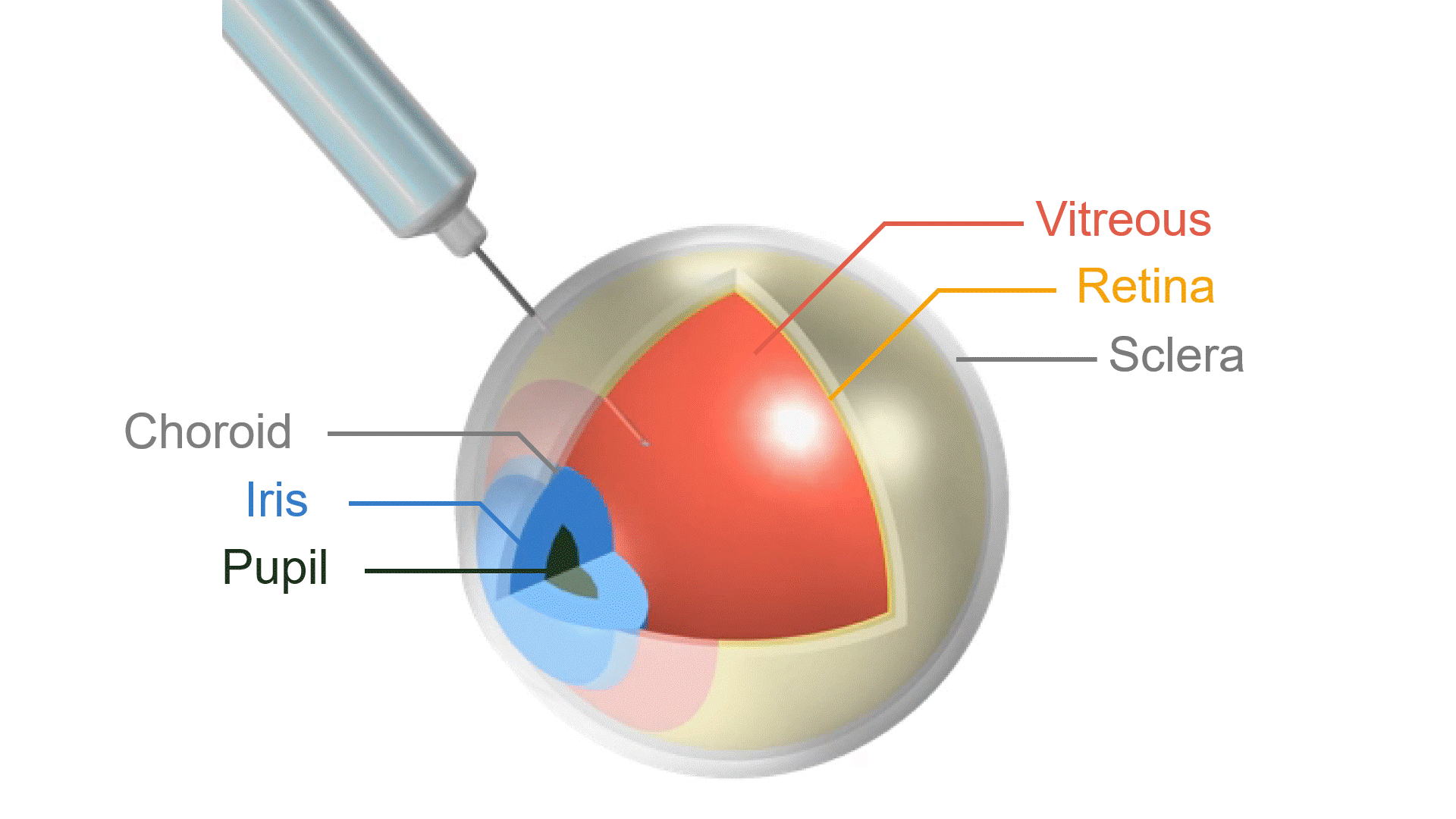Technical Challenge
Combination products—such as prefilled syringes and autoinjectors—enable precise, automated delivery of ophthalmic therapeutics directly into the eye. Their successful design depends on tightly controlling drug dose, delivery rate, and injection force to protect sensitive retinal tissues and ensure reliable patient outcomes. Computational fluid dynamics
(CFD) simulation allows accurate prediction of these critical metrics. By modeling parameters such as dose volume, concentration, flow rate, and needle gauge, CFD delivers actionable insight to optimize injection performance, minimize complications, and accelerate product development.
Veryst Solution
Veryst used multiphysics simulations to model needle-based intravitreal injection (Figure 1), predicting key outcomes: injection force, delivery time, intraocular pressure (IOP) changes, and drug dispersion within the vitreous.
At an injection rate of 2 mL/min, the injected drug solution’s momentum interacts with the viscous vitreous humor, producing a characteristic mushroom-shaped bolus that evolves during delivery (Figure 1). At higher flow rates (not shown), the jet can persist deeper into the vitreous, increasing the risk of exposing retinal tissues to transient elevations in local fluid pressure. Thus, simulations are critical for assessing flow within the eye to help safeguard against retinal injury.
Another key consideration is the physical properties of the vitreous humor used in simulation. Our models use a liquid vitreous analog, which does not fully capture the true structural, rheological, and age-dependent complexity of actual human vitreous. Native vitreous is a heterogeneous, viscoelastic gel whose unique properties influence both flow and drug distribution. As a result, analog-based simulations may under- or overestimate outcomes such as bolus spread, IOP spikes, or retinal mechanical loading compared to real physiologic conditions. Therefore, validation with experimental data from real vitreous is vital to ensure model accuracy and effective product development.
These advanced multiphysics simulations quantify both drug dispersion and transient IOP elevation, supporting risk assessment for both retinal safety and patient comfort. The models enable virtual experimentation with needle gauge, injection rate, and formulation viscosity, guiding device and procedure optimization to maximize efficacy and minimize risks.
Veryst Solution
Veryst used multiphysics simulation to help product developers evalute and optimize intravitreal injection performance, predicting drug distribution, injection time, peak force, and intraocular pressure. This modeling approach accelerates innovation and helps ensure safe, effective ocular drug delivery.
